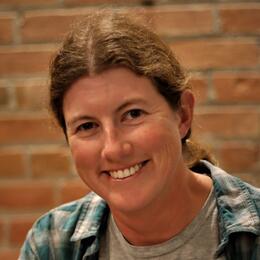Another entry in Abby’s Birdbrained Summer. Abby, the summer communication intern for the Coast Office of Audubon North Carolina, is visiting sites with Audubon’s field staff and our community of volunteers. After she goes into the field, she’ll post blogs detailing her experiences.
In the past two weeks, Audubon North Carolina has completed nest censuses for the Least Tern and Black Skimmer colonies present at the south end of Wrightsville Beach. We met punctually at 6:30 a.m., and the sun had just surfaced from the Atlantic. A nest census sounded complex to me, but was actually pretty simple. Each census-taker was allocated a stick. We lined up and walked parallel to one another through the colony, dragging the sticks through the sand. These lines designated areas in which we tallied each nest and kept us from counting the same nest twice. We methodically scoured the beach and discovered 235 Least Tern nests and 137 Black Skimmer nests.
During the censuses, I was exposed to freshly hatched chicks for the first time. Many of the hatchlings lay in their nests next to pieces of the egg they had just emerged from. Some had been out of their shells long enough that their down was fluffy, but others were still wet. It was interesting how much variation was present in chicks of the same species. Both the Least Terns and Black Skimmers came in innumerable different colors and patterns of speckles.
The censuses are carried out at the "peak of incubation," when (approximately) the greatest number of nests are active, and repeated about every three weeks until there are no more nests on the ground. The count with the greatest number of nests is the best estimate available for the total number of pairs in the colony. Total number of pairs, as well as percent of eggs hatched, are the metrics used to compare the success of the colony over the years. For species with smaller numbers, such as Common Terns, Audubon staff and interns can simply count all the nests during regular nest checks. But for larger numbers, censuses like the ones I just participated in are necessary.
Black Skimmer parents will brood their chicks attentively during their first week, but by the second many of the birds will begin to run. Least Terns brood their chicks only about two days, after which the young birds are able to leave the nest. Both species of chicks will not fledge until they are about three weeks old. At this point, the birds are extremely vulnerable to predators, starvation, and extreme weather conditions. Hopefully, eggs will continue to hatch and the birds will make it through the high mortality nesting stage. Soon they will be learning to fly. For now, it's a great time to visit the beach to see the bustle of chick activity inside the posting.
Sources:




